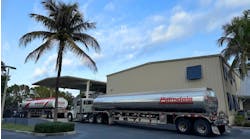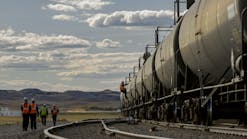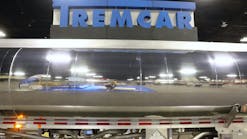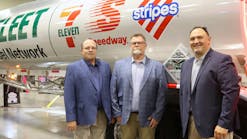Shares of Schneider National Inc. popped more than 10% Feb. 2 after the company’s leaders said they expect 2023’s results to strengthen as the year progresses and plan to grow their capital spending from 2022.
Wisconsin-based Schneider reported fourth-quarter net income of $110 million on revenues (excluding fuel surcharges) of $1.35 billion, numbers that were down 18% and 1%, respectively, from the last three months of 2021. Operating profits fell 19% and the company’s operating ratio slipped about 2 percentage points to 90.8% as volumes slipped and pricing power faded.
Schneider booked truckload revenue per truck per week of $4,171 in its dedicated operations, which was down 8% from late 2021. In intermodal, where the company recently switched its Western rail partner to Union Pacific, better yields and network management helped improve the operating ratio by more than 7 points from Q3 to 83.3%.
Looking ahead to 2023, President and CEO Mark Rourke and his team are forecasting that Schneider will grow its adjusted diluted earnings per share to somewhere between $2.15 and $2.35. The midpoint of that range will be down 15% from 2022 and take the company back to its 2021 EPS production.
“We look forward to demonstrating the resilience of our diverse portfolio through evolving market conditions, while advancing our strategic priorities of dedicated, intermodal and logistics, disciplined investment in our business, and shareholder value,” CFO Stephen Bruffett said.
Rourke and Bruffett echoed a number of other fleet executives who have said in recent weeks that they expect the freight downturn to end in the coming months before ending 2023 on a stronger note. To help prepare Schneider for that improvement, they are allocating $525 million to $575 million to capital spending this year, a notable increase from last year’s $462 million.
Schneider shares (Ticker: SNDR) rose nearly 11% to $30.38 during the regular session Feb. 2 but gave up a little of those gains after hours. Over the past six months, they have now climbed about 25%, growing the company’s market capitalization to $5.4 billion.
This article originally appeared on FleetOwner.com.









